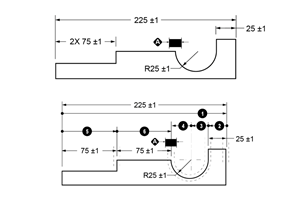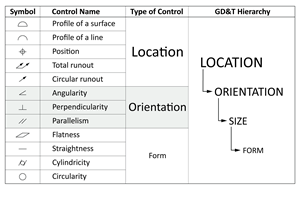Five-Axis and CAD/CAM Give Toolmaker an Edge
Over the years, Pattern Mold has used many software packages. The trigger for the latest change came with the purchase of their first five-axis machine. The search for the software demanded that it would make this new machine work as efficiently as possible.
Mike Jacobs has spent most of his adult life running Pattern Mold. In 1986 Jacobs started his tooling business in a garage with one customer. Like many manufacturers, the business has had its ups and downs over the years. “After a while, we realized we had to differentiate ourselves or we’d get lost in the competition. Aluminum thermoform tools have been an area we have specialized in, and we were able to leverage this expertise and turn it into our primary line of business,” says Jacobs.
Challenges: Doing More with Less
The biggest change Jacobs has seen over the years of running Pattern Mold is how demanding customers have become. “It used to be that a customer would ask the toolmaker when the tool would be ready. Now it’s the customer who dictates that. And the deadlines just keep shrinking. Not too long ago we got an order for a vacuum form tray for a chip manufacturer. Twenty years ago, we made a similar tray and had two weeks to do it. This time around, we had only two days to make it for half the money,” says Jacobs.
Although business is on the rise now, the uncertainty of the economic outlook makes small manufacturers like Pattern Mold hesitant about adding to their payroll. At the same time, even with all the talk about lack of jobs, finding qualified toolmakers is quite a challenge according to Jacobs.
The bottom line is that Jacobs and his team of five employees have to do more with less—deliver high quality tools on short deadlines with fewer hands on the job.
Solution: 5-Axis and Cimatron Give Pattern Mold an Edge
Jacobs has always understood that staying ahead of the competition requires investment in technology. “The only way we can stay in business and keep up with these escalating customer demands is by using more advanced machines and better software, so our cleanup is reduced, and we actually need less machine time to get the work done. Because we are more efficient now, we can get more done and do it faster without adding people or new machines.”
Over the years, Jacobs and his team at Pattern Mold have used many software packages, starting with a Beech CAD system running on an Apple II computer back in Jacob’s garage. The trigger for the latest change came with the purchase of Pattern’s first 5-axis machine. Jacobs was searching for the software that would make this machine work as efficiently as possible.
“I’ve heard lots of promises from software vendors over my time here, so when the Cimatron salesperson came along I was obviously skeptical,” admits Jacobs. “He somehow convinced me to give it a try and we have not regretted it since. They got us up and running on the 5-axis. All the other software we tried had a really hard time getting the 5-axis to work for us.”
According to Jacobs, the transition to Cimatron has been smoother than expected. “The software is truly intuitive; it takes just a couple of days for a new guy to get up to speed on and produce some pretty nifty code. We haven’t called much for support from Cimatron, but when we have, they’ve been extremely responsive and knowledgeable. It’s nice to know you have the experts in your corner when you need them.”
Results: More Work with Fewer Resources
The 5-axis capabilities give Pattern an edge over the competition, as Jacobs explains: “We are getting calls from companies that are looking for a tool shop that can do true 5-axis work. They know these jobs cannot be done on a 4-axis.” These jobs are often challenging, but Jacobs welcomes the challenge. “There are not many shops out there that can do what we can, and that’s keeping us quite busy.”
Working with Cimatron puts Pattern Mold at an advantage from the get go. “The files we get from the customers are typically incomplete or problematic from a manufacturing point of view,” explain Jacobs. “Cimatron gives us a clean start by spotting these problems and fixing them before we even start working on the file, whether it’s a Pro/E, Unigraphics, Solidworks, or any other format. Our customers know they can drop any problem on us and we’d be able to handle it with Cimatron.”
Being able to run the machines unattended overnight provides a big boost to productivity at Pattern Mold. According to Jacobs, having the confidence in the Cimatron tool path makes this possible. “Cimatron’s simulation is so accurate that we never question it.”
“The quality of the surface we are able to produce with Cimatron is superb,” adds Jacobs. “The cleanup guy really likes it because it saves him a lot of work and gives him a lot of control over the final output. To be honest, we couldn’t keep up with our customers’ demands today with what we were putting out there before.”
Although Pattern still owns other software, they have recently purchased additional seats of Cimatron. “When you run it side by side, Cimatron is at least twice as fast,” says Jacobs. “With the other software, it’s not uncommon to let the machine run overnight to get the code out. None of the programmers go to it anymore; they all want to use Cimatron, so we had to buy additional seats. It’s pretty hard to imagine being in this business and not having the best tool at your disposal. I even have it running on a laptop at home!”
Related Content
How to Improve Your Current Efficiency Rate
An alternative approach to taking on more EDM-intensive work when technology and personnel investment is not an option.
Read MoreTolerancing in Mold Design, Part 1: Understanding the Issues of Conventional Bilateral Tolerancing
Mold designers must understand the location, orientation and form limitations of conventional tolerancing before changing to another dimensioning system.
Read MoreHow to Fix Predicted Warpage Before It Happens with Windage and CAD Model Morphing
Applying windage and model-morphing techniques saved toolmaker/molder Sturgis Molded Products the time, cost, headaches of multiple part/mold design iteration loops, cumbersome cooling fixtures, and long molding cycles.
Read MoreTolerancing in Mold Design, Part 2: Using GD&T to Address Conventional Tolerancing Issues
Mold designers can achieve a single interpretation of workpiece functionality when following the American Society of Mechanical Engineers Geometric Dimensioning and Tolerancing standard.
Read MoreRead Next
How to Use Continuing Education to Remain Competitive in Moldmaking
Continued training helps moldmakers make tooling decisions and properly use the latest cutting tool to efficiently machine high-quality molds.
Read MoreHow to Use Strategic Planning Tools, Data to Manage the Human Side of Business
Q&A with Marion Wells, MMT EAB member and founder of Human Asset Management.
Read MoreAre You a Moldmaker Considering 3D Printing? Consider the 3D Printing Workshop at NPE2024
Presentations will cover 3D printing for mold tooling, material innovation, product development, bridge production and full-scale, high-volume additive manufacturing.
Read More


















